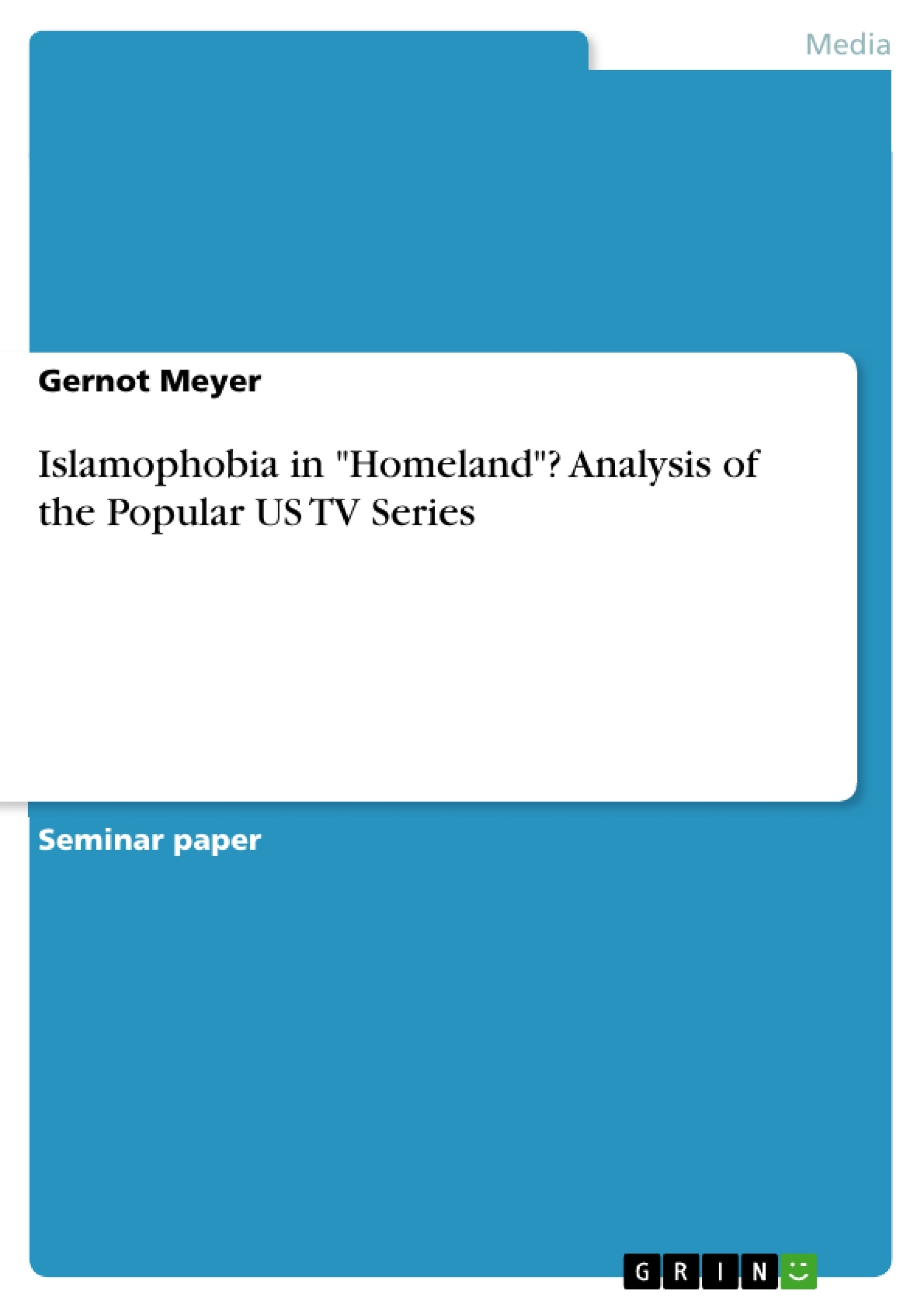This essay analyses one episode of the popular US TV series "Homeland", which has been said to be “TV’s most Islamophobic show” (cf. Al-Arian 2012) and decide if it contains islamophobic elements.
In a first step, using a variety of different sources, islamophobia will be defined. Afterwards, the paper will link theoretical input about the effects of stereotyping to stereotyping of Muslims as terrorists in post 9/11 series such as "24" or "Sleeper Cell". It will then analyse one episode of Homeland and apply the theoretical input to decide whether or not the series contains islamophobic ellements. Finally, the findings of this paper will be concluded.
Inhaltsverzeichnis (Table of Contents)
- Introduction
- Understanding Islamophobia...
- The Media and (Fictional) Stereotyping ..
- Islamophobia in TV and Film?
- Homeland and Islamophobia .......
- Conclusion.....
Zielsetzung und Themenschwerpunkte (Objectives and Key Themes)
This essay aims to define islamophobia and explore its manifestation in US television series and films, specifically through an analysis of an episode of the popular show "Homeland." The essay investigates the role of the media in shaping stereotypes and explores the relationship between stereotyping and islamophobia. It examines how Muslims and Islam are portrayed in the entertainment industry and whether fictional media has an effect on stereotyping.
- Defining and understanding Islamophobia
- The influence of media on stereotyping
- The relationship between stereotyping and Islamophobia
- Depiction of Muslims and Islam in the entertainment industry
- Analysis of "Homeland" and its portrayal of Islamophobia
Zusammenfassung der Kapitel (Chapter Summaries)
- Introduction: This chapter establishes the context of the essay, highlighting the increase in Islamophobia following the 9/11 attacks and the growing need to understand its manifestation in various domains, particularly the media.
- Understanding Islamophobia: This chapter delves into the concept of Islamophobia, providing a nuanced definition by exploring different perspectives and historical contexts. It discusses the Runnymede Trust Commission's report and its definition of Islamophobia, as well as the limitations of this approach. Additionally, it examines alternative definitions, including those proposed by Allen and Schneiders, highlighting the complex and multi-layered nature of the phenomenon.
- The Media and (Fictional) Stereotyping: This chapter focuses on the role of the media in shaping stereotypes and its potential impact on public perception. It explores the relationship between stereotyping and Islamophobia, examining how media representations can contribute to the formation of negative attitudes and prejudices.
- Islamophobia in TV and Film?: This chapter delves into the question of whether fictional media, such as television series and films, can contribute to Islamophobia. It examines the representation of Muslims and Islam in the entertainment industry, exploring how these portrayals might shape audiences' understanding and perceptions.
Schlüsselwörter (Keywords)
This essay primarily focuses on the complex phenomenon of Islamophobia, exploring its definition, historical contexts, and manifestation in the media, specifically US television series. Key terms include Islamophobia, stereotyping, media representation, fictional media, entertainment industry, and the television series "Homeland." The essay aims to shed light on how the interplay of these elements contributes to the complex dynamics of Islamophobia in contemporary society.
- Citar trabajo
- Gernot Meyer (Autor), 2015, Islamophobia in "Homeland"? Analysis of the Popular US TV Series, Múnich, GRIN Verlag, https://www.grin.com/document/351373



